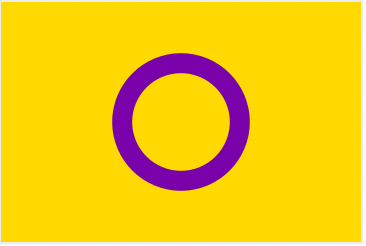Understanding Intersex: Beyond the Male-Female Binary
Written on
Chapter 1: Intersex Births Are More Common Than You Think
Intersex births occur more frequently than many people realize. According to the Intersex Society of North America, approximately one in every 100 births results in individuals whose bodies differ from typical male or female characteristics. Furthermore, about one in every 1,500 infants requires a specialist to make a determination regarding their sex. However, many variations in sex anatomy, particularly those that are hormonal or chromosomal, may not be evident until later in life. This indicates that possessing a penis does not automatically define someone as a man, as they may also have a vagina, ovaries, or even an empty scrotum resembling labia. Conversely, individuals born with a vagina might possess internal testes.
Relying solely on a person’s genitals to determine their sex is overly simplistic. A rare condition known as complete gonadal dysgenesis (Swyer syndrome) affects approximately one in 150,000 births, where an individual has female external and internal genitalia but a 46,XY karyotype (indicating male chromosomes).
At times, infants may exhibit genitalia that displays characteristics of both sexes. Moreover, some individuals are born with a combination of male and female biological features that are not externally visible. A child's intersex status might not become apparent until puberty, when their body begins producing hormones that do not align with their assigned sex.
For example, certain expected changes during puberty, such as voice deepening or breast development, may not occur as anticipated, or they may manifest in ways stereotypically associated with the opposite sex. Consequently, a person who appeared more masculine in childhood might present more femininely after puberty, challenging society's rigid binary understanding of gender.
A culture that strictly adheres to a binary understanding of gender—often conflated with physical characteristics—may struggle to comprehend these complexities. It is convenient to categorize individuals into clear-cut boxes: boys behave one way, and girls behave another. However, those who do not fit neatly into these categories often encounter discrimination and exclusion, even from their families.
Section 1.1: The Impact of Surgical and Hormonal Interventions
Some intersex individuals have undergone surgical or hormonal procedures without their consent to create sex characteristics deemed more socially acceptable. Increasingly, these practices are recognized as violations of human rights. For instance, in 2011, Christiane Völling became the first known intersex individual to successfully sue for damages resulting from non-consensual surgical intervention. In April 2015, Malta made history by becoming the first country to prohibit non-consensual medical modifications of sex anatomy, including those affecting intersex individuals.
Subsection 1.1.1: Understanding Terminology

The term “hermaphrodite,” once widely used, is now seen as misleading and scientifically inaccurate regarding humans, as well as inappropriate and stigmatizing. The preferred terminology today is “intersex individuals” or “people with intersex conditions.”
Section 1.2: The Diversity of Intersex Identities
Many experts estimate that the prevalence of intersex births is around 1.7%, similar to the percentage of individuals born with red hair. It's crucial to note that being intersex is not synonymous with a specific gender identity; rather, intersex individuals may identify in various ways, depending on their unique physical traits and personal experiences. There are over 40 known intersex variations in scientific literature. Some intersex individuals who were compelled to conform to a particular gender expression through surgical intervention during childhood may undergo sex reassignment later in life.
Chapter 2: The Complexity of Gender and Legal Recognition
Countries such as Australia, Germany, and Malta that recognize a third category (X) on birth certificates may not fully address the challenges faced by those with non-normative sexual identities. Assumptions are often made about the homogeneity of this category, and strong cultural tendencies persist to modify individuals to align with binary gender norms. The conflation of sex and gender remains prevalent, perpetuating societal pressures.
The first video, "I'm A Feminist Because..." explores feminist perspectives and the importance of inclusivity.
The second video, "Turning Women On: How To Master Seduction, Power, Confidence & Charisma," delves into the dynamics of attraction and empowerment.
Recognizing the unique and diverse nature of intersex populations is critical. By medicalizing intersex bodies, we inadvertently reinforce the belief that gender identities must align with biological sex characteristics to be considered valid.
Ultimately, it is essential to create a more accepting and accommodating society for those who challenge the traditional sex characteristic binary. A growing consensus on human rights advocates for the cessation of social stigma, prejudice, and forced medical procedures, emphasizing the right to bodily integrity and self-determination.
© Copyright Elle Beau 2021